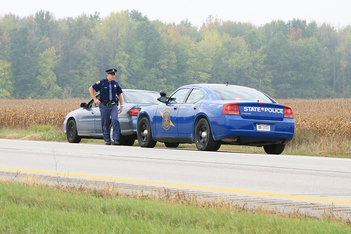 What to do during a traffic stop
At some point during your time behind the wheel, you may be
stopped by a police officer. Do you know
what to do if you get pulled over? The
following points can help make a traffic stop safer and less stressful.
- First, when you notice emergency lights flashing
behind you, pull over to the right side of the road as soon as it is safe to do
so. Keep calm and try to remain still. Stay in your vehicle, open the driver’s side
window and keep your hands in sight on the steering wheel.
- When
the officer asks, provide your driver’s license, vehicle registration and proof
of insurance. At this point in the traffic stop, the officer should tell you
why you were stopped. If he or she
doesn’t, it’s okay to inquire about the reason for the stop once you have
provided your driver’s license, vehicle registration and proof of
insurance. When addressing the officer,
speak with the same level of respect you expect from him or her.
- If the officer issues you a citation, don’t
argue the reason for it during the traffic stop. The best and most appropriate place to
dispute a citation is in court.
- When the officer tells you it’s okay to leave,
make sure your seat belt is buckled and that it’s safe to enter the roadway
before pulling out. As you get back on
the road, follow all traffic laws, including using your turn signal. The officer will likely remain on the side of
the road, with lights activated, until you have safely re-entered traffic.
- If you feel the officer acted inappropriately or
didn’t treat you fairly, it’s okay to follow up with a phone call to his or her
supervisor.
Information excerpted from the Michigan State Police What to Expect During
a Traffic Stop web page. (MSP photo)
Heed the Steer It, Clear It Law
Each
day in Michigan, there are more than 660 vehicle crashes that do not involve injuries
or fatalities. If you are involved in a crash and there are no serious injuries
or fatalities, Michigan law requires you to move your car off the roadway if
the vehicle can be driven and it is safe to do so.
Pull over to a
safe area such as the shoulder or median.
Failure to obey safe quick clearance laws could result in a ticket. The
Steer It, Clear It Law helps keep individuals involved in a crash and first
responders safe, and cuts down on traffic congestion that can cause backups and
delays.
|